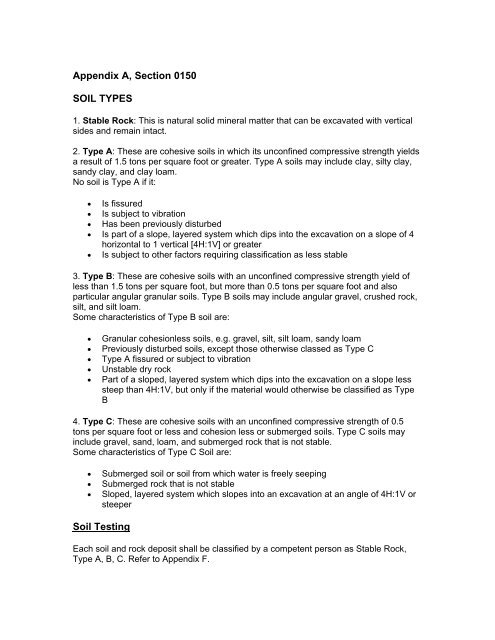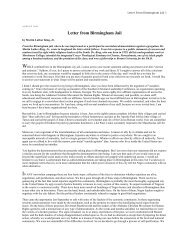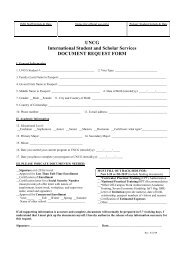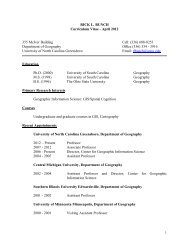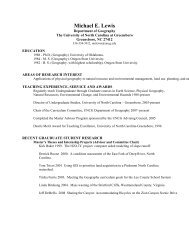Safety and Health Policy and Procedure Manual TRENCHING AND ...
Safety and Health Policy and Procedure Manual TRENCHING AND ...
Safety and Health Policy and Procedure Manual TRENCHING AND ...
Create successful ePaper yourself
Turn your PDF publications into a flip-book with our unique Google optimized e-Paper software.
Appendix A, Section 0150<br />
SOIL TYPES<br />
1. Stable Rock: This is natural solid mineral matter that can be excavated with vertical<br />
sides <strong>and</strong> remain intact.<br />
2. Type A: These are cohesive soils in which its unconfined compressive strength yields<br />
a result of 1.5 tons per square foot or greater. Type A soils may include clay, silty clay,<br />
s<strong>and</strong>y clay, <strong>and</strong> clay loam.<br />
No soil is Type A if it:<br />
• Is fissured<br />
• Is subject to vibration<br />
• Has been previously disturbed<br />
• Is part of a slope, layered system which dips into the excavation on a slope of 4<br />
horizontal to 1 vertical [4H:1V] or greater<br />
• Is subject to other factors requiring classification as less stable<br />
3. Type B: These are cohesive soils with an unconfined compressive strength yield of<br />
less than 1.5 tons per square foot, but more than 0.5 tons per square foot <strong>and</strong> also<br />
particular angular granular soils. Type B soils may include angular gravel, crushed rock,<br />
silt, <strong>and</strong> silt loam.<br />
Some characteristics of Type B soil are:<br />
• Granular cohesionless soils, e.g. gravel, silt, silt loam, s<strong>and</strong>y loam<br />
• Previously disturbed soils, except those otherwise classed as Type C<br />
• Type A fissured or subject to vibration<br />
• Unstable dry rock<br />
• Part of a sloped, layered system which dips into the excavation on a slope less<br />
steep than 4H:1V, but only if the material would otherwise be classified as Type<br />
B<br />
4. Type C: These are cohesive soils with an unconfined compressive strength of 0.5<br />
tons per square foot or less <strong>and</strong> cohesion less or submerged soils. Type C soils may<br />
include gravel, s<strong>and</strong>, loam, <strong>and</strong> submerged rock that is not stable.<br />
Some characteristics of Type C Soil are:<br />
• Submerged soil or soil from which water is freely seeping<br />
• Submerged rock that is not stable<br />
• Sloped, layered system which slopes into an excavation at an angle of 4H:1V or<br />
steeper<br />
Soil Testing<br />
Each soil <strong>and</strong> rock deposit shall be classified by a competent person as Stable Rock,<br />
Type A, B, C. Refer to Appendix F.


